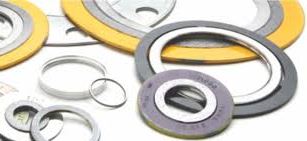
A gasket is a deformable material clamped between two sealing surfaces preventing leakage. It’s an essential product for virtually all types of industries. It prevents escaping gas, air, water, and many other fluids in every unexpected commercial and industrial situation.
What makes a Gasket so crucial is the way it performs on various products and machines; this is why it is a must to choose the right Gasket among its other designs for a particular application.
If we choose Gasket for FDA applications, it’s a sensitive issue that goes above the food processing plants to those involved in making pharmaceutical products. Thousands of queries and requests are sent to many Teflon gasket makers each day to provide gaskets that could comply with Food and Drug Administration (FDA) regulations.
How Is Gasket considered FDA-compliant?
A gasket is considered FDA-compliant through three methods:
By Existing FDA Regulations – Some materials are already covered by existing regulations. For instance, perfluorocarbon saps and PTFE are found in 21 CFR 177.1550
GRAS – when Gasket contains GRAS, it is assumed safe for FDA application. Many materials are used without problems in FDA applications and are listed as GRAS. Using a sustenance substance gasket might be GRAS either through logical methods or, for a substance utilized as a part of nourishment before 1958, through experience given regular use in nourishment.
FDA FCN – Those exclusive material which does not contain any of the single traces of the elements mentioned above are eligible to submit for FDA under a food control notification (FCN).
Things you need to consider while choosing a Gasket for an FDA application
The critical criteria must be considered while choosing the appropriate Gasket for FDA application.
Neutrality & Stability – Always prefer the neutrality and stability of material while testing it for FDA application; there shouldn’t be even a single percent of any unwanted odors or taste in ingredients or products with which they might come into contact.
Moreover, it should be free of all contaminants or any part which could find its way into the product stream.
Process Conditions – Another main thing to consider is the process condition. It includes a broader range of temperature and pressure, high mechanical loads, aggressive media, and cleanness.
Consumer health & safety – The gasket material must meet strict regulations to certify the consumer’s health and safety. For instance, fixing materials intended to help consumable (drinking) water applications are ensured consistent with the NSF/ANSI 61 standard.
Which material should you use?
Selecting suitable quality gaskets for food applications involves a variety of materials. The two strong materials which must be considered for food application include;
PTFE – This material is often used in pumps, valves, food mixers, and flanged joints in piping and transfer equipment. A key advantage of PTFE gasket material is that it is among the most chemically resistant.
Fluoro-silicone gaskets – This material is widely used in food applications.
Tips For Choosing the Right Gasket
Test the Gasket Performance
If you want to get the best Gasket for food application, first test its parameters. You can test it via a hot compression test, creep relaxation testing, and more.
The picked Gasket will withstand your wander’s specific components, for instance, temperature, weight, weight, adaptability, and assurance from substance degradation.
Check the Chemical Resistance
Before choosing the right Gasket, figure out the chemical resistance level for the required Gasket. It might sound challenging, but it’s essential to consider how Gasket will fit into a specific application.

